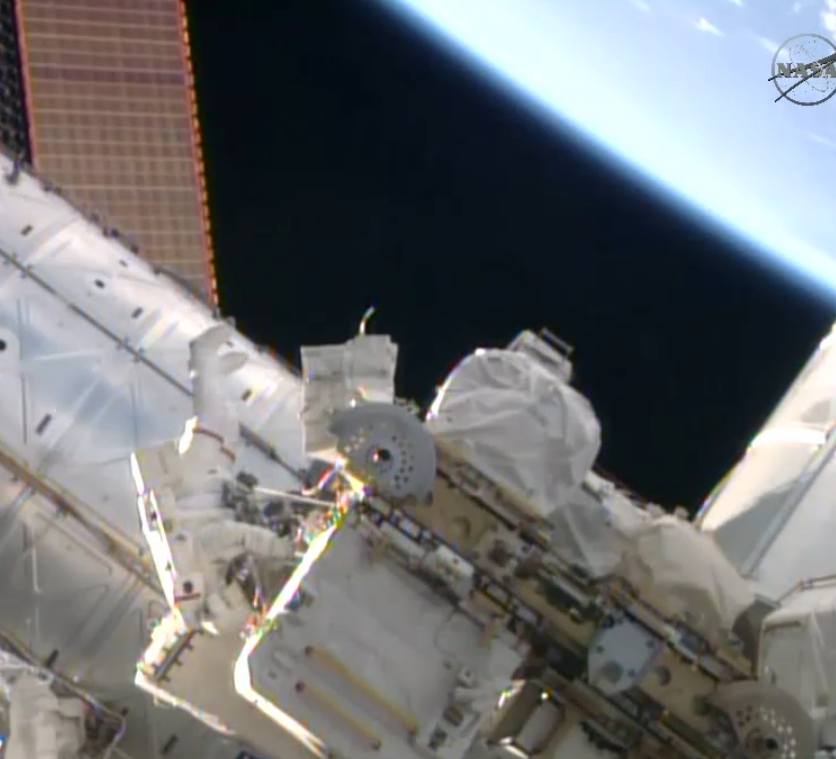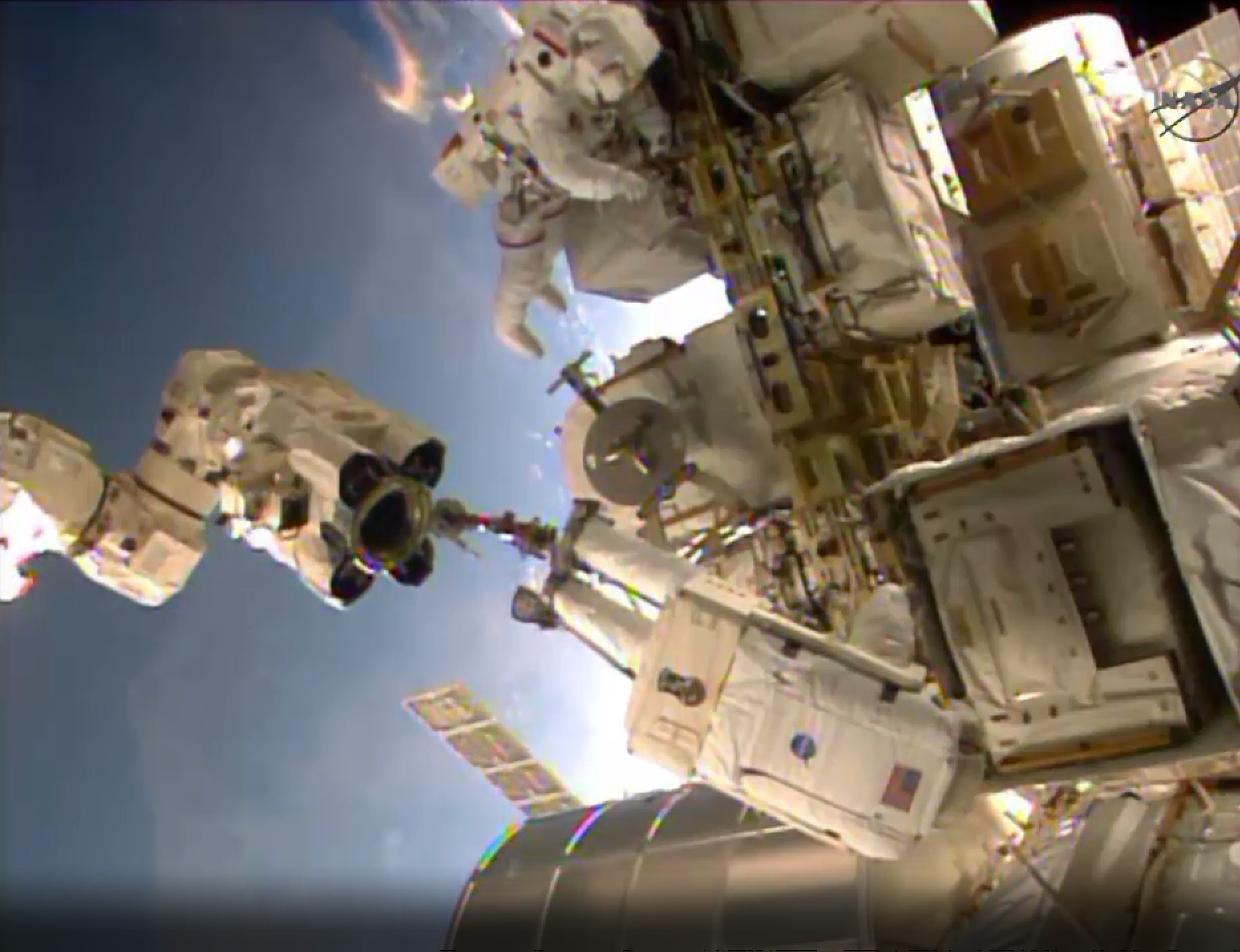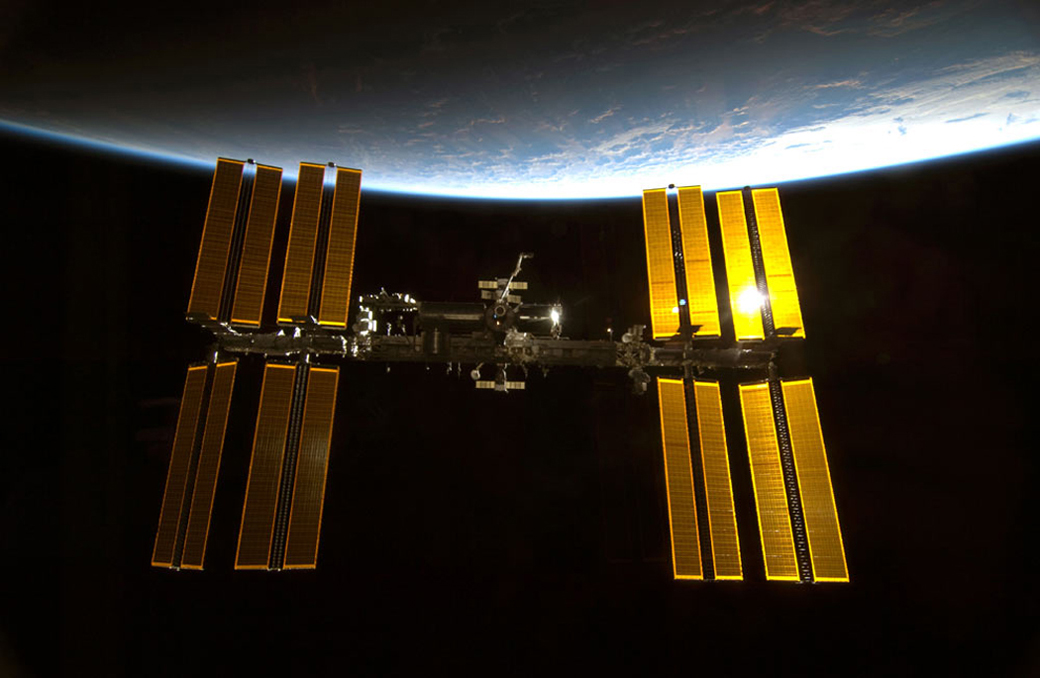Spacewalking Astronauts Upgrade Space Station

Two astronauts ventured outside the International Space Station to do some maintenance and repair work during a more-than-6-hour spacewalk today (Oct. 7).
NASA astronaut Reid Wiseman and German European Space Agency astronaut Alexander Gerst performed the spacewalk to take care of a couple of necessary chores on the outside of the station. The spacewalk officially started at 8:30 a.m. EDT (1200 GMT), and ended about six hours and 13 minutes later. It was the first spacewalk for both Wiseman and Gerst, and it came one day before Wednesday's highly anticipated "blood moon" total lunar eclipse.
"Alex, it looks like we've almost got a full moon out here," Wiseman said as he stepped outside of the hatch for the first time. "It's beautiful." [See amazing pictures from the Oct. 7, 2014 spacewalk]
The astronauts moved a failed pump module that had been removed from the space station's vital cooling system to a long-term storage area. The pump module's new home will give it some protection and insulation in case a future crew decides to try to fix the module, NASA TV officials said during a broadcast of the spacewalk.
The pump module was stored temporarily on a different part of the station after another pair of astronauts performed two urgent spacewalks in December 2013.
Gerst grabbed the pump module while he rode the space station's robotic arm, which was being controlled by NASA astronaut and space station crewmember Barry Wilmore from inside the laboratory.
"Take your time," Gerst told Wilmore as he moved him with the robotic arm. "I'm very comfortable."
Get the Space.com Newsletter
Breaking space news, the latest updates on rocket launches, skywatching events and more!

The astronauts also replaced a light on a camera on the outside of the station's United States laboratory and installed a relay that feeds backup power to the rail system that helps move the outpost's robotic arm.
To prep for spacewalking before flying to the station, Wiseman and Gerst trained in water to simulate the weightlessness of space. "Just like in the pool, except for that big blue planet down there," NASA astronaut Doug Wheelock said from Mission Control during the spacewalk.
Wiseman will head out on another spacewalk next week to perform more maintenance on the station. Wilmore (who has not performed a spacewalk before) will be partnered with Wiseman on the Oct. 15 excursion.
These U.S. EVAs (short for extravehicular activities, another name for spacewalks) are part of a series of spacewalks that will ultimately start prepping the station for the arrival of commercial crewed vehicles, according to Kenny Todd, space station integration operations manager.
"We're going to be doing the things we need to do on these EVAs to prep for moving some modules around," Todd said during a news conference previewing the spacewalks last week. "All that is in preparation for being able to support future [commercial] crewed vehicles coming to [the] station. We're trying to get out in front of that … We'll be prepping for moving modules; we'll be installing a new docking adapter system. All of that will be happening throughout the next several months onboard the station."
The station currently plays host to an international crew of six. Wiseman, Gerst and Wilmore are joined by Russian cosmonauts Maxim Suraev, Alexander Samokutyaev and Elena Serova, who round out the Expedition 41 crew.

Follow Miriam Kramer @mirikramer and Google+. Follow us @Spacedotcom, Facebook and Google+. Original article on Space.com.
Join our Space Forums to keep talking space on the latest missions, night sky and more! And if you have a news tip, correction or comment, let us know at: community@space.com.

Miriam Kramer joined Space.com as a Staff Writer in December 2012. Since then, she has floated in weightlessness on a zero-gravity flight, felt the pull of 4-Gs in a trainer aircraft and watched rockets soar into space from Florida and Virginia. She also served as Space.com's lead space entertainment reporter, and enjoys all aspects of space news, astronomy and commercial spaceflight. Miriam has also presented space stories during live interviews with Fox News and other TV and radio outlets. She originally hails from Knoxville, Tennessee where she and her family would take trips to dark spots on the outskirts of town to watch meteor showers every year. She loves to travel and one day hopes to see the northern lights in person. Miriam is currently a space reporter with Axios, writing the Axios Space newsletter. You can follow Miriam on Twitter.









